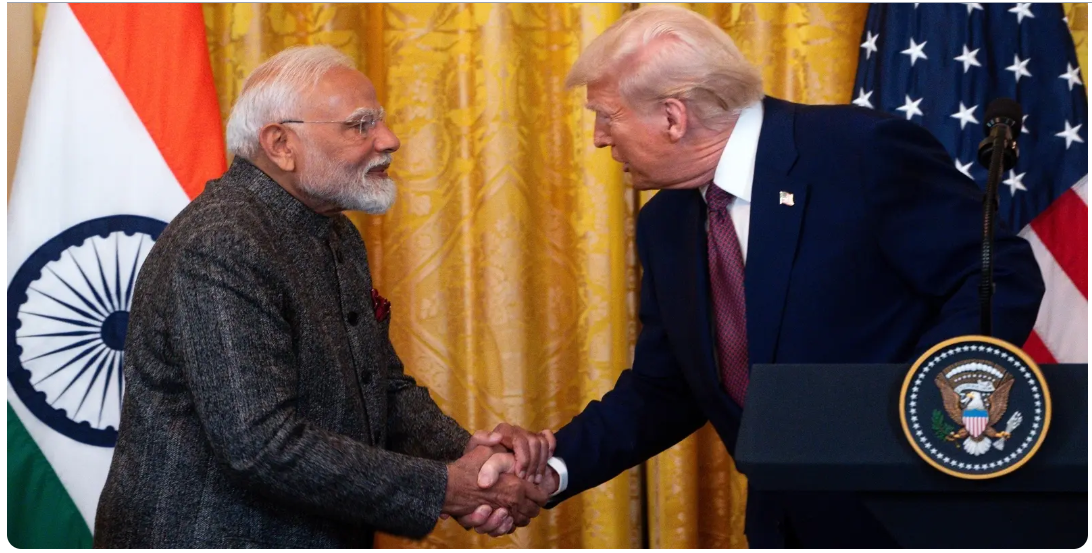Trade discussions between the US and India could place significant pressure on India’s key export sectors, particularly chemicals, automobiles, textiles, and footwear, according to a recent report by Emkay Global. Chief Economist Madhavi Arora from Emkay highlighted that India’s exports in these sectors are at risk of facing higher tariffs due to potential reciprocal measures from the US.
Impact of Potential US Tariffs
Emkay’s analysis suggests that if the US administration moves forward with imposing reciprocal tariffs, nearly every major sector in India could be impacted. Among the sectors most vulnerable are chemicals, automobiles, textiles, and footwear, all of which are important contributors to India’s export economy. The tariffs could directly affect India’s trade balance and its ability to maintain competitive pricing in global markets.
However, Arora also noted that US President Donald Trump has so far only announced a review of the situation, with the earliest potential for tariffs to take effect being in April. This leaves a window of opportunity for negotiations, during which India may be able to secure exemptions or favorable deals. The chief economist suggests that such agreements could involve reducing India’s import duties or increasing purchases from the US.
US-India Trade Relations: A Potential Shift
The Emkay report also highlights the growing importance of certain sectors like defense and energy, where the US sees an opportunity to expand exports to India. In a joint briefing with Prime Minister Narendra Modi, President Trump expressed interest in strengthening trade ties in these areas, with US oil, gas, and defense platforms featuring prominently in the discussion. This shift could provide new avenues for trade between the two nations, even as other sectors face more challenges.
India’s trade relationship with the US is characterized by relatively high tariffs on American imports compared to other nations. This makes India particularly vulnerable if reciprocal tariffs are imposed. The report notes that India may be disproportionately affected due to these tariff disparities, especially as India imposes some of the highest duties on US imports.
Tata Motors shares: 42% Crash from peak Key Reasons Behind the Crash in 7 Months
Trump’s Tariff Plan and Its Broader Implications
President Trump recently indicated that he plans to implement reciprocal tariffs, which would require countries imposing tariffs on US goods to face the same tariff rates on their exports to the US. This approach is expected to target countries like India, which charge relatively high tariffs on American products.
This move could affect India’s broader strategy to boost domestic manufacturing and assembly. Many of the goods most affected by reciprocal tariffs are intermediate goods, which are vital to India’s manufacturing sector. Emkay’s report emphasized that this could disrupt the government’s efforts to incentivize local production.
India’s Tariff Structure and Exposure to Risks
The Emkay analysis points out that while India imposes high tariffs on US goods relative to other countries, a majority of its imports from the US are subject to lower tariff rates. Around 82% of US imports into India carry tariffs of between 0-10%, while approximately 15% are taxed between 10-20%. Only about 3% of US imports to India are subject to tariffs higher than 20%. Despite this, India’s high overall tariff structure places it at greater risk of being hit hard by reciprocal tariffs if the US follows through with its plans.
India’s Position in the Global Trade Landscape
In terms of trade volume, India is the 10th largest exporter to the US, with exports valued at $91 billion in 2024. However, it lags behind major exporters like Mexico, China, and Canada, who rank at the top of the list. India’s trade deficit with the US in 2024 stands at $49 billion, which is considerably lower than those of the top three exporting countries.
This lower deficit may not shield India from the impacts of Trump’s tariff policies, as the focus seems to be on countries with larger trade deficits with the US. Both Morgan Stanley and Nomura have identified India as being particularly vulnerable to the effects of the proposed reciprocal tariffs, given its higher tariff rates on US goods.
Trump Sides with Russia, and India Feels Relieved—But What’s Next?
Conclusion: Negotiation and Strategic Adjustments Ahead
The Emkay note suggests that India will need to carefully navigate these trade discussions in order to minimize the impact on its export sectors. While the threat of reciprocal tariffs looms large, there is still room for negotiation, especially in sectors like defense and energy. As both countries continue to discuss their trade relationship, it will be crucial for India to strategically manage its tariff policies and maintain a balance between strengthening domestic manufacturing and preserving its export competitiveness.
